Photo by Africa Studio via Shutterstock
Lighting for food photography comes in three general types. Natural light for food photography is a great option, but you still need an actual lighting setup even when taking advantage of natural or ambient light.
The other two types of equipment for a food photography lighting setup are artificial lights, either strobes (flash units), or continuous lighting such as quartz lamps, incandescent photoflood bulbs, fluorescents, or LED lights.
Let’s discuss them all!
Table of Contents
- Natural Light Food Photography Lighting Setup
- Gear Choices and Placement
- Artificial Light Food Photography Lighting Setup
- Backdrops Are Essential
- Go Beyond Basic
Natural Light Food Photography Lighting Setup
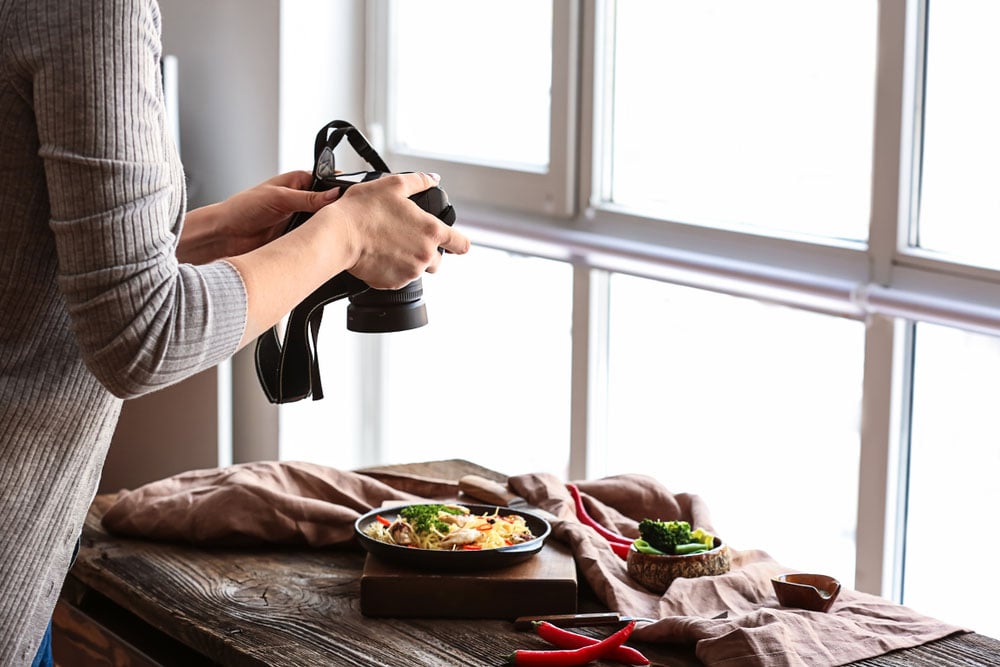
Photo by Aquarius Studio via Shutterstock
We’ll start here since many beginners to this genre of photography may be testing it out to see if it’s something you want to continue doing.
What would a food photography lighting setup look like using primarily natural light? Some photographers might be inclined to think that using natural or ambient lights means there isn’t any actual food photography lighting setup to even consider.
For high-quality images that could be used commercially (which is why most people try this genre in the first place), natural or ambient light still requires us to modify or control it. Some ways to do that are with reflectors, using backdrops, and having our camera on a tripod.
First, consider the tripod choice since that one tool will work in all of our food photography lighting setups. While I am a huge fan of tripod alternatives and travel tripods, nothing beats a full-featured medium to heavy-duty tripod for commercial photography.
Gear Choices and Placement
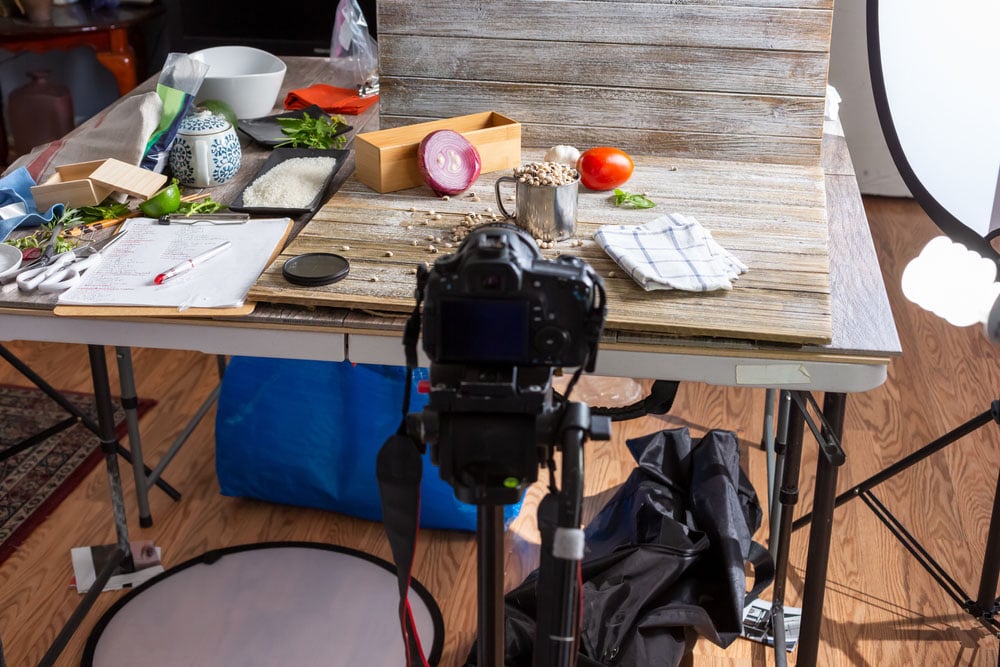
Photo by The Image Party via Shutterstock
Here are a few tips regarding the gear to use and its placement for the best food photography results:
- The Manfrotto MK290XTA3 is a fine choice for a medium-duty tripod that has versatile features and excellent stability that we can use onsite or in our own home studio. It can be an everyday use tripod for paid photography or stuff we’re doing simply for the fun of it.
- Best Ever Backdrops has photo-realistic water-resistant backdrops that can also be a part of any food photography lighting setup. A good backdrop is virtually indispensable for any type of food photography. The backdrops from Best Ever Backdrops are highly portable, so we can use them in our studio or take them onsite.
- A 5-in-1 Reflector Pack is also invaluable as part of any food photography lighting kit. When using only natural or ambient light, a reflector helps you control where the existing light can be directed.
A Smart Way to Use a Reflector
One method of using a reflector is to mimic having two lights using the reflector in a fill light position. From the best camera position, whatever direction of the main light source, place the reflector on the other side of you, angle it until you see the desired lighting effect.
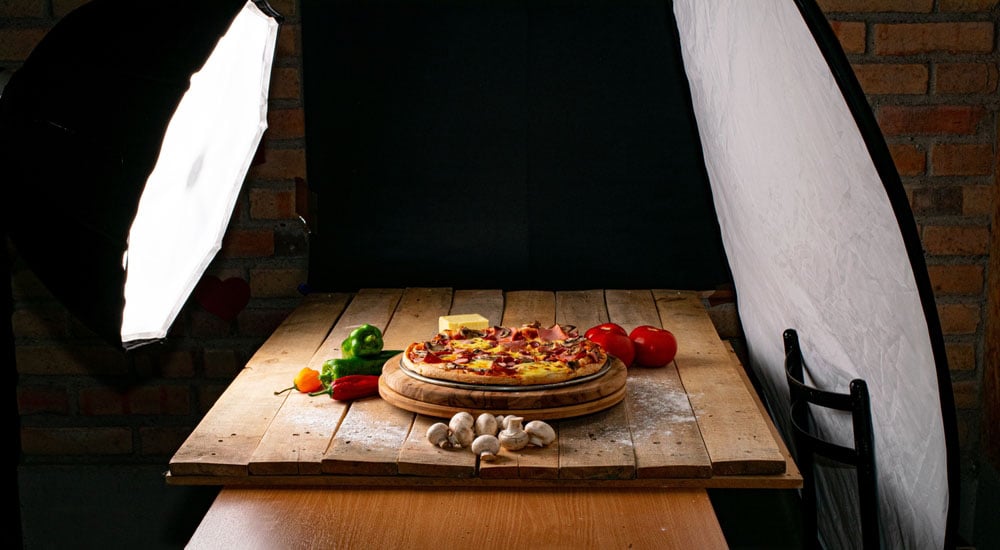
Photo by Charlie.Fox via Shutterstock
A large reflector can also be used to direct light towards or away from the backdrop for separation of the goods from the background. When using photo-realistic backdrops such as the Mix and Match Collection from Best Ever Backdrops, including the background as part of the background allows for realism with complete control.
A higher position of the reflector from about the same lighting configuration as the key plus fill light mentioned above works well within a natural light food photography lighting setup. Simply adjust the reflector angle to shine light either directly on the backdrop or towards the rear of the food being posed, depending on your desired final image.
Artificial Light Food Photography Lighting Setup
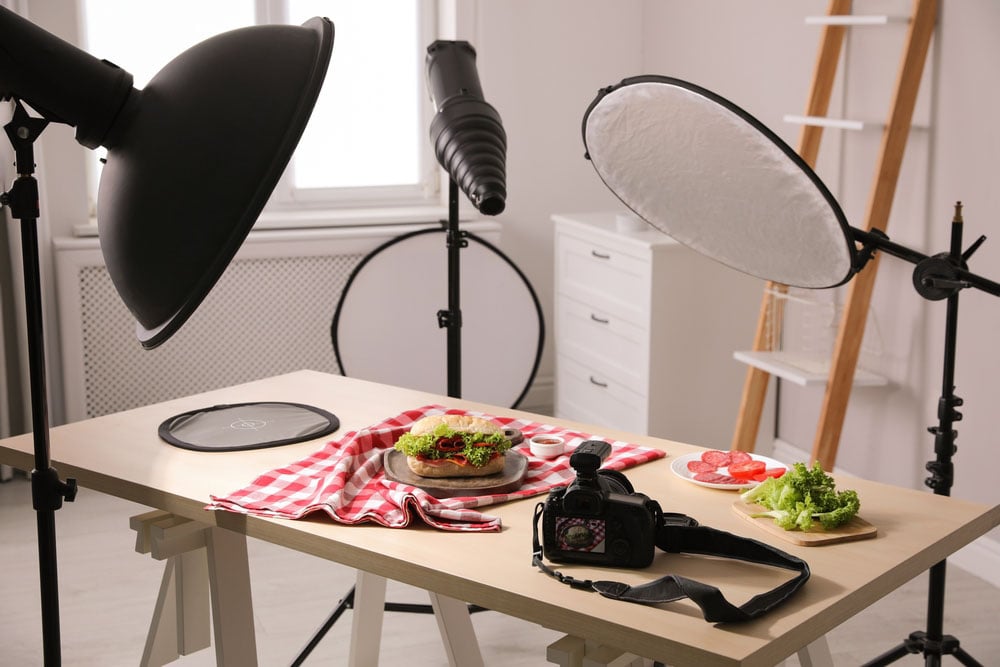
Photo by New Africa via Shutterstock
Though I mentioned flash units, photofloods, and fluorescent fixtures, the type of artificial lights I prefer for a food photography lighting setup are LEDs.
Allow me to sing the praises of LEDs for our food photography lighting setup:
- Bright light
- Cool operation
- Color fidelity
- Adjustment of color temp and power intensity
- Compact size
- Long-life bulbs
- Battery power options
Since LEDs are continuous lights, our food photography lighting setup can also light up our videos.
Here is an example of a portable but fully capable LED version of a food photography lighting setup, the Smith Victor CINE-Flood 3000 2 head kit. The Bowens mount light heads work with or without the included soft boxes.
A remote control can be used to control each light, and you can configure your food photography lighting setup in a variety of ways. A good starting point is to have the lights on either side of the camera, using about a 45-degree angle to light up the subject.
Either use the lamps balanced to each other for virtually shadow-free lighting or lower the intensity of one by 2 or 3 stops to introduce subtle modeling effects. Adding a 3rd light to your food photography lighting setup, such as a small, battery powered LED panel light, can add depth and separation by illuminating the backdrop.
Backdrops Are Essential
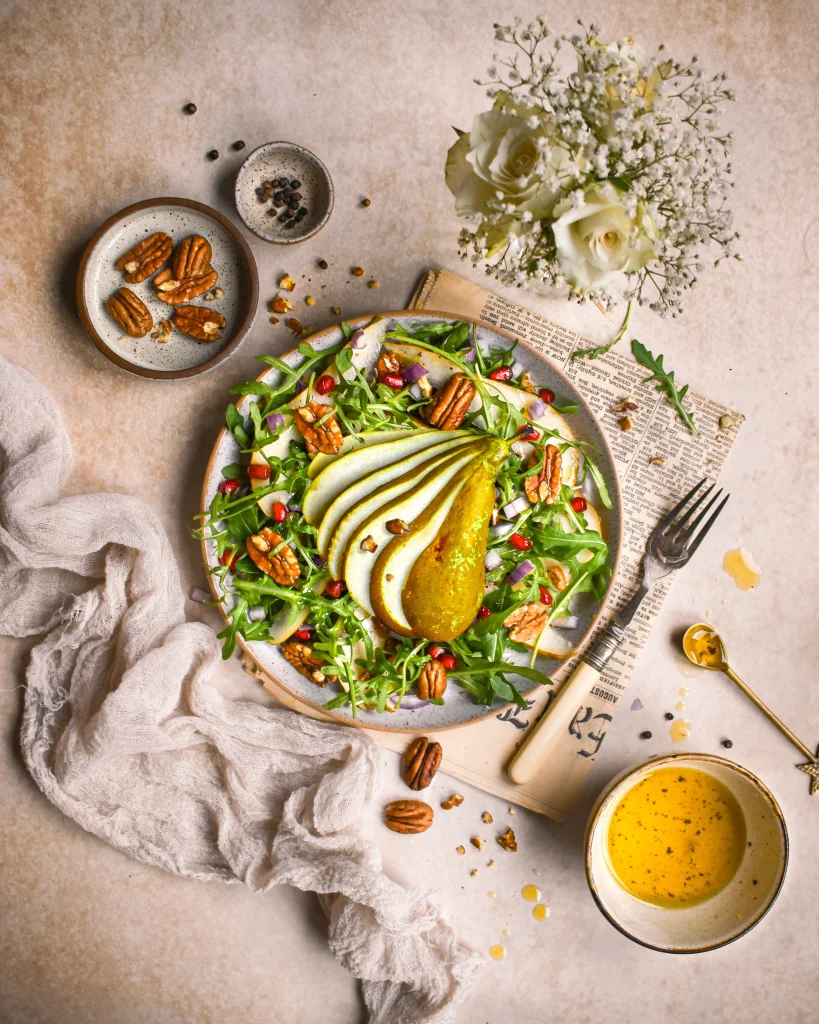
Image Credit: Best Ever Backdrops
A good background, such as the stain-resistant 24” x 36” portable backgrounds from Best Ever Backdrops, can make or break an image. Unless very carefully arranged, many food photography images will benefit greatly from employing high-quality backdrops.
Beyond your food photography lighting setup, these superb backdrops are great for other small product photography and for close-up portrait photography such as a headshot or a head and shoulders pose.
Go Beyond Basic
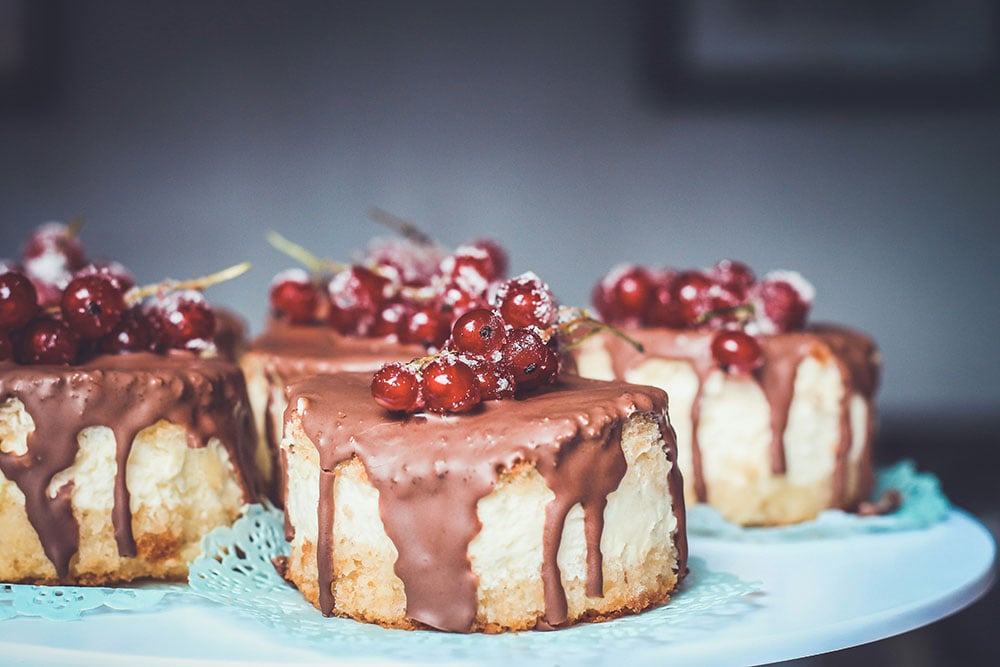
Photo by Brina Blum on Unsplash (license)
Once you’ve shot a few paid or unpaid photoshoots, you can go beyond the basic or standard food photography lighting setups and experiment with other techniques such as high key and low key photography, HDR photography, and several specialty configurations.
A steady tripod, LED lights, reflectors, and an excellent backdrop or two will enable you to create beautiful and commercially viable images with your food photography lighting setup.
Other Food Photography Gear to Consider
- Peak Design Travel Tripod
- Canon EOS R5
- Canon EOS R6
- Acratech GP-SS Ball Head
- Canon RF 100mm f/2.8L USM
- Canon RF 85mm F1.2 L USM
- Wireless Camera Remote
Our articles might have affiliate links and the occasional sponsored content, but don’t sweat it – if you buy something, we get a little kickback at no extra cost to you, and we only hype products we truly believe in!

